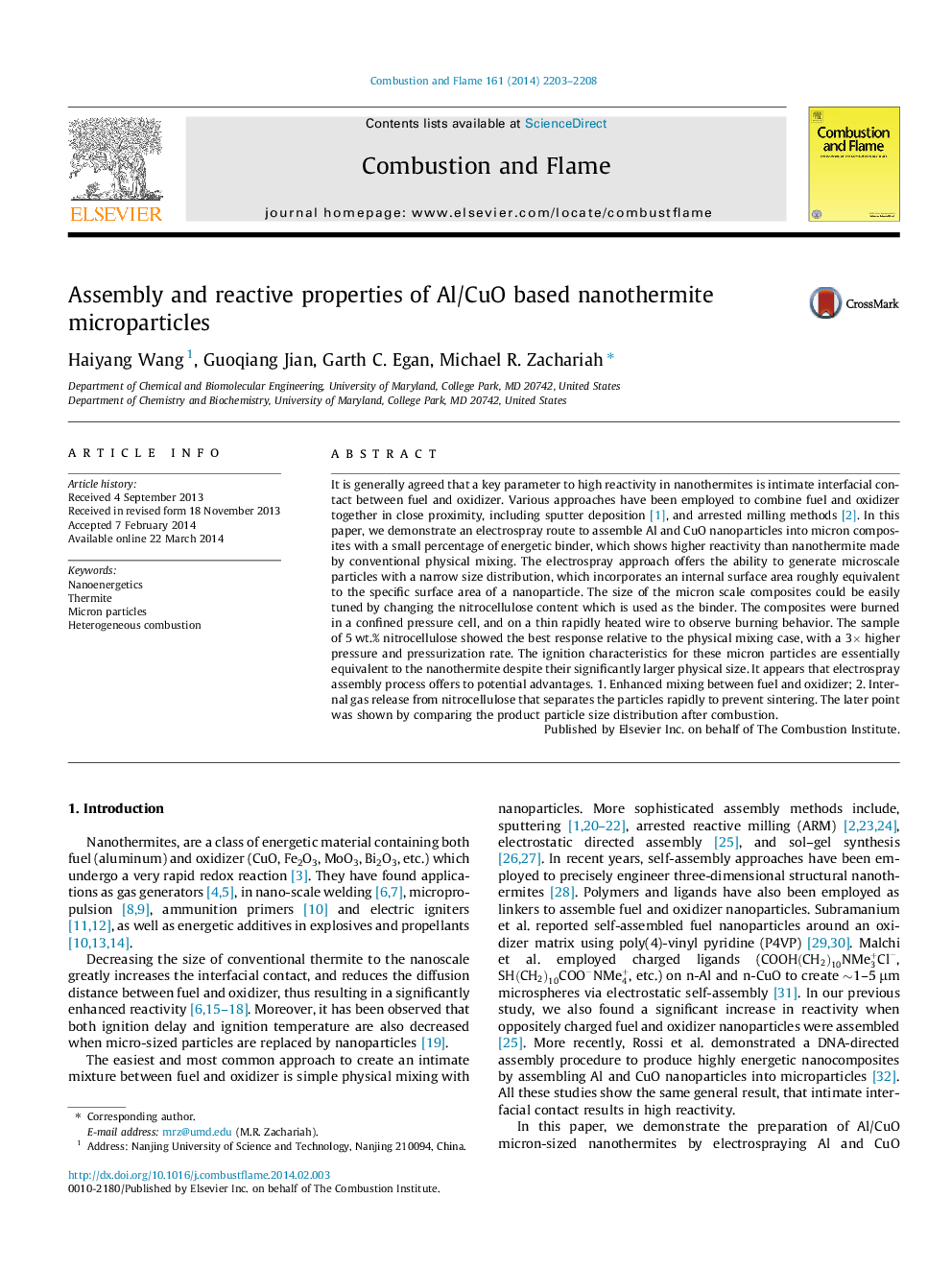| Article ID | Journal | Published Year | Pages | File Type |
|---|---|---|---|---|
| 166425 | Combustion and Flame | 2014 | 6 Pages |
It is generally agreed that a key parameter to high reactivity in nanothermites is intimate interfacial contact between fuel and oxidizer. Various approaches have been employed to combine fuel and oxidizer together in close proximity, including sputter deposition [1], and arrested milling methods [2]. In this paper, we demonstrate an electrospray route to assemble Al and CuO nanoparticles into micron composites with a small percentage of energetic binder, which shows higher reactivity than nanothermite made by conventional physical mixing. The electrospray approach offers the ability to generate microscale particles with a narrow size distribution, which incorporates an internal surface area roughly equivalent to the specific surface area of a nanoparticle. The size of the micron scale composites could be easily tuned by changing the nitrocellulose content which is used as the binder. The composites were burned in a confined pressure cell, and on a thin rapidly heated wire to observe burning behavior. The sample of 5 wt.% nitrocellulose showed the best response relative to the physical mixing case, with a 3× higher pressure and pressurization rate. The ignition characteristics for these micron particles are essentially equivalent to the nanothermite despite their significantly larger physical size. It appears that electrospray assembly process offers to potential advantages. 1. Enhanced mixing between fuel and oxidizer; 2. Internal gas release from nitrocellulose that separates the particles rapidly to prevent sintering. The later point was shown by comparing the product particle size distribution after combustion.
